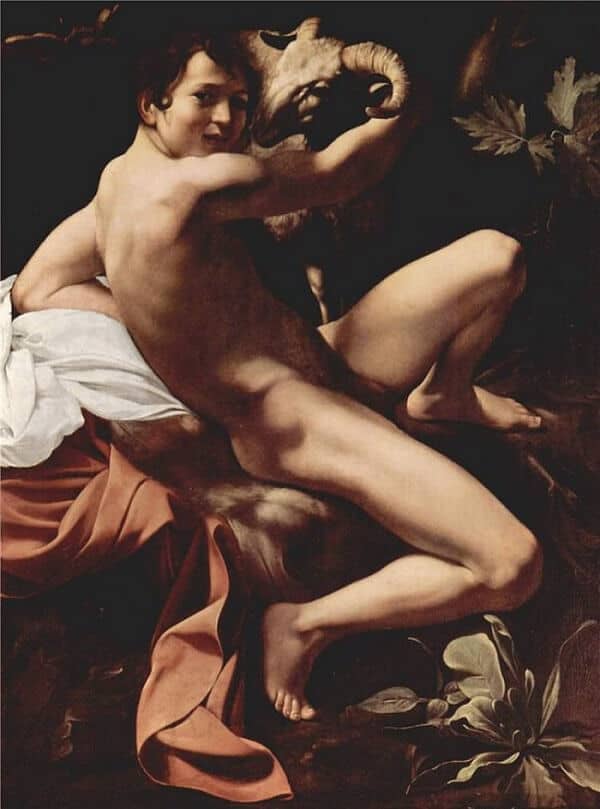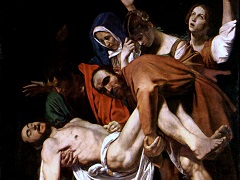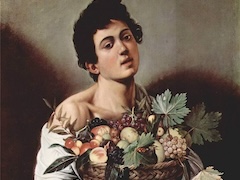John the Baptist, 1602 by Caravaggio

The most likely provenance for this iconographically unusual picture was first reconstructed by Denis Mahon (1955), who argues that it was commissioned by Ciriaco Mattei, was given by him to his son, Giovanni Battista, who, interestingly enough, bore the same name as the saint, and was then bequeathed by the son in wills of January 1623 and June 1624 to Cardinal del Monte. The picture was listed in the del Monte inventory of 1627 and sold at the del Monte sale of 1628, probably with the Rome Fortune-teller, to Cardinal Pio. It was sold by the Pio family to Pope Benedict XIV in 1749/50 to be lodged in the newly founded Capitoline museum.
The fact that the young Baptist has none of his usual identifying attributes (a bowl, reed cross and lamb) has led to some doubt about the identity of the subject, but the fact that it is mentioned in so many of the early sources as a Baptist should be given due emphasis. The Baptist had often been depicted as a good-looking, semi-nude, youth during the Renaissance and Caravaggio clearly owed as much to this well-established iconographic trend as he did, in the pose, to Michelangelo's energetic male nudes on the Sistine ceiling or his statue of Day in the Medici Chapel. But the figure, lounging like the Uffizi Bacchus on a bundle of bedding, is much more overtly sensual than any of these Renaissance works, and it is as if Caravaggio chose to develop the subject's acquired connations at the expense of its original biblical and Christian significance. Yet this is probably an oversimplification resulting from our inadequate understanding of the symbols which do appear in the picture. Most mystifying of all, the ram, instead of the customary Lamb of God, may, as Luigi Salerno (1966) has suggested, have been intended as a symbol of sacrifice - Christ's future sacrifice, but also, on a philosophical level, the inevitable sacrifice of St. John's smiling youth to the encroachments of time.
Another version in the Galleria Doria-Pamphili, Rome, may have been painted by Caravaggio himself, but is probably an extremely good copy by a different artist.
















